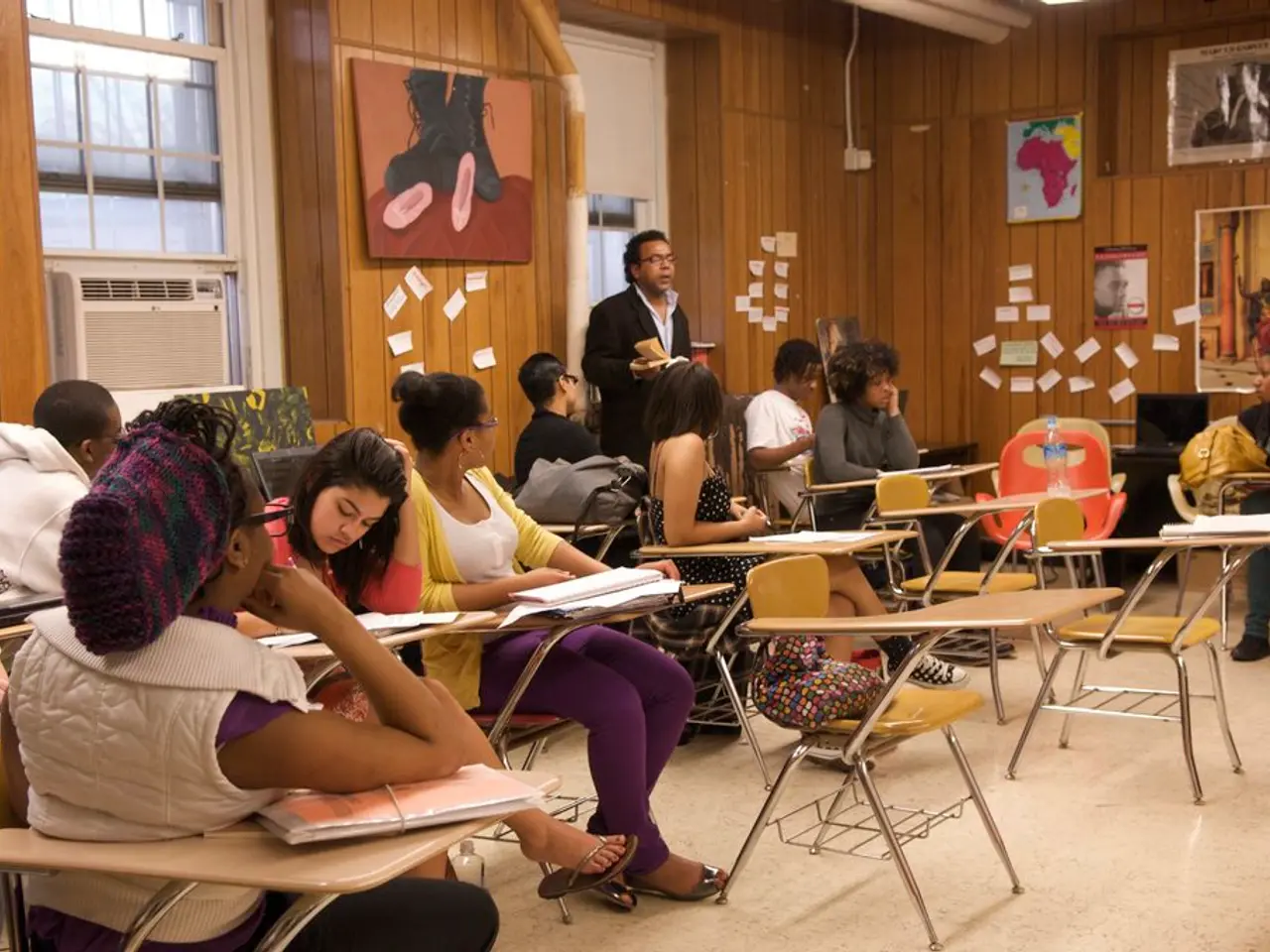U.S. Schools ought to reconsider allocation of funds towards staff members negatively impacting students' academic growth
In a recent analysis by Open the Books, over 12,000 U.S. school districts from 2019 to 2023 were examined, revealing a concerning trend: increased spending correlates with moderately worse student performance on the National Assessment of Educational Progress (NAEP) exams.
One of the key findings is that excessive education spending in the United States has not translated into improved performance. Instead, it has led to increased teacher salaries in some schools, despite declining results. This raises questions about inefficiencies and possible misallocation of resources.
For instance, Hawaii kept payroll growth to just 1.5% and saw a 14% increase, the biggest gain of any state. By contrast, more money spent per student in New York does not seem to correlate with improved student performance. Even Utah, which raised spending by 62%, showed only a small gain (3%).
However, the situation is more dire in states like Vermont, where a 74% payroll boost led the nation, yet it slipped 13% in the rankings, the nation's third-biggest loss. Similarly, Maryland's $30 billion education plan saw no gains, with much of the money being spent on classes promoting 'fat pride' and eating 'without guilt.'
The roles of administrators, such as the senior executive director of equity, director of equity, director of equity-centered principal development, and equity specialists, are suspected to arguably worsen learning. The analysis suggests that public bureaucracies are burning cash on non-essential expenditures that hinder better teaching.
In Portland, Maine's largest district, the number of six-figure salaries for principals and administrators increased more than four-fold. In Baltimore, teachers make up less than half of the schools' staff, with the rest being high-paid administrators.
In the six states that boosted payrolls the most (by 23% or more), three were among the top five biggest proficiency losers, another was loser No. 6. This trend suggests that the greater the payroll growth in school districts, the more ground they tend to lose in the rankings.
The analysis does not differentiate between teacher pay and administrator pay. However, higher pay for administrators may contribute to worse student performance, as spending on non-teaching personnel has soared.
In light of these findings, it is crucial for schools to focus on the basics and avoid wasting taxpayer dollars. The education system needs to prioritise effective teaching and learning, ensuring that resources are allocated efficiently and effectively to improve student outcomes.
Read also:
- Strategies for expanding your creative enterprise, directly from industry experts
- Top-Picked Resistance Bands for Elderly: Comprehensive Guide on Their Usage
- Ex-U.S. Chief of Staff Issues Alert Regarding Revival of Measles and Related Diseases
- CBD and Marijuana as Potential Treatments for Migraines and Headaches?




